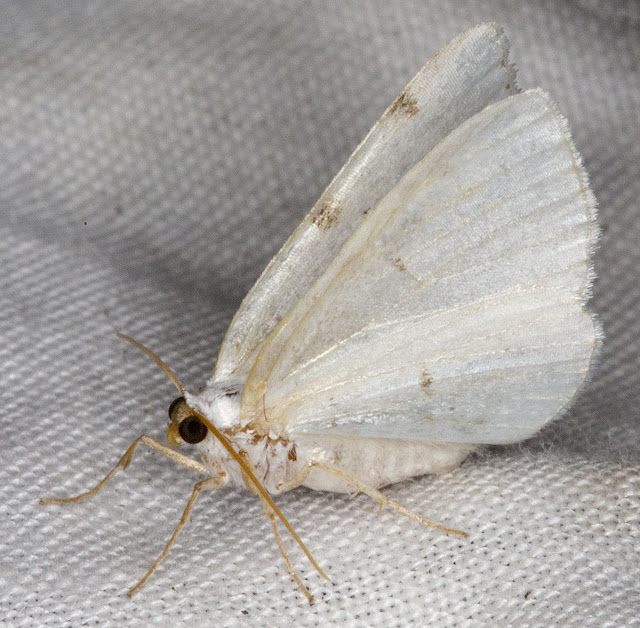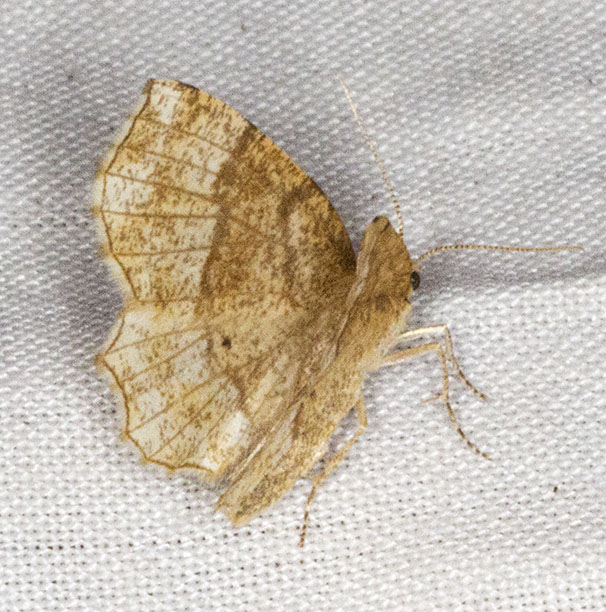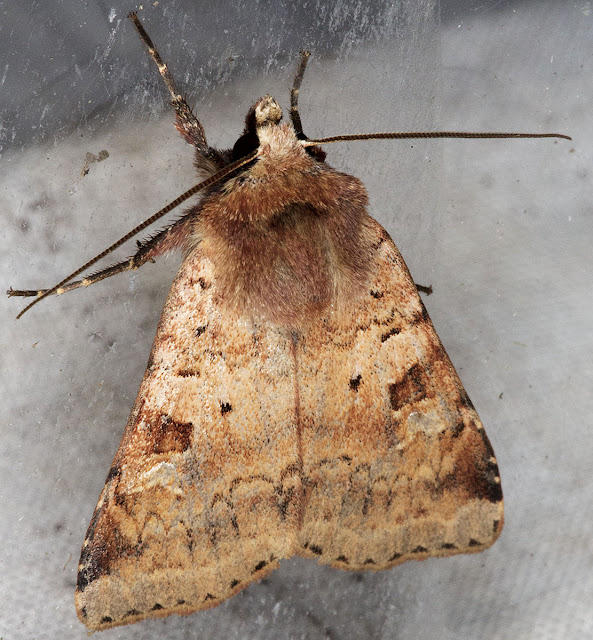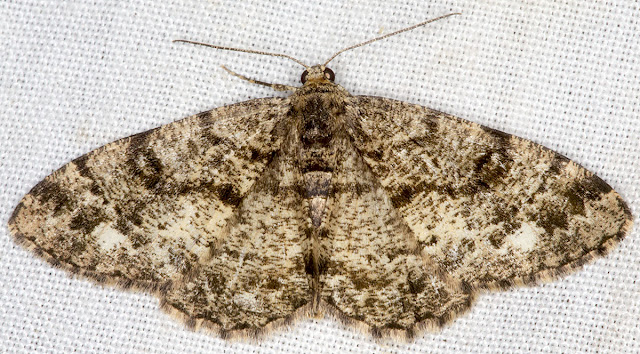 |
| Kent Butterfly Conservation mothing event at Oldbury Hill, 10 June 2012. |
Here's the trap that David Gardner brought to Oldbury Hill. It's his own design, and it packs flat for transport. At the far end of that wire is a petrol-powered generator.
There are no egg-boxes here because the trap is constantly attended, and there is no need to provide somewhere for moths to rest until morning.
 |
| White-pinion Spotted, Lomographa bimaculata. Oldbury Hill, 10 June 2012. |
Mostly white, but with two dark spots at the edge of each forewing. The larvae of this moth eat Blackthorn and Hawthorn. I have a Hawthorn hedge in my garden, but I haven't seen any of these in my garden trap yet.
This White-pinion Spotted is not to be confused with the much rarer White-spotted Pinion, which makes me wonder just how evil the people were who named them.
 |
| Little Thorn, Cepphis advenaria. Oldbury Hill, 10 June 2012. |
Another small moth, with scalloped wings like its larger relatives - here's a link to an
Early Thorn I saw in March. The larval food plant is Bilberry, and this wood is full of Bilberry plants, so it's surprising that we only saw one. We also saw another Bilberry eater, a Beautiful Snout, but I didn't get a photo worthy of showing.
 |
| Orange Footman, Eilema sororcula. Oldbury Hill, 10 June 2012. |
This moth looks quite different, and indeed it comes from a different group. The first two belong to the family Geometridae, and this is one of the Arctiidae. Some of the Footmen are tricky to tell apart, but the orange colour makes this one easy to identify. Its larvae eat lichens.
 |
| Ingrailed Clay, Diarsia mendica mendica. Oldbury Hill, 10 June 2012. |
This pretty creature, different again, belongs to the Noctuidae. There are some general similarities within the Noctuid wing patterns that make most of them easy to place to their family, but that only helps a little in identification because there are many of them, and some, like this one, are very variable in the detail of their markings. I don't think I would ever have been able to pin down the species of this one by myself. As with so many things, you need to see a lot of them in various conditions and ages to become any sort of expert.
Last for today:
 |
| Brindled White-spot, Parectropis similaria. Oldbury Hill, 10 June 2012. |
Another Geometer. There are several moths with this general mottled appearance, which you can see would be good for camouflage against, for example, bark. This moth is distinguished by the white spots near the edges of its forewings. Its larvae can eat a whole range of woodland trees and shrubs.
Next time, a single moth, the most beautiful of those we saw on 9th June.






No comments:
Post a Comment